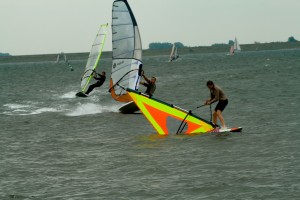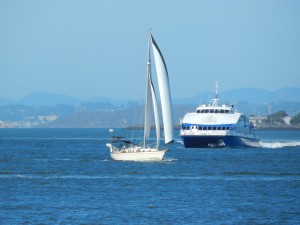One of the reasons many people are hesitant to take to the water is having a lack of control over their fate.
Every time you set foot on a boat, you cede control to the powers of nature – even on a gin clear, flat calm day it is an adventure where something could happen.
Unfortunately, people do get injured, and more unfortunately some people don’t make it home. Water sports are dangerous but training is about limiting the dangers.
In 2010, 672 US boaters died whilst afloat. In the same year, 420 people died in the waters of Great Britain. These grisly statistics are from all boating incidents, among motor boats, paddle and sailing craft.
Even on a perfectly good day afloat things can go hideously wrong.
On motor vessels there could be an engine fire due to poor maintenance. On a sailing vessel you could be hit on the head by the boom in a gybe, and be seriously injured. A gas leak at the cooker could leave the boat in pieces suddenly and instantly. Motor vessels and dinghies can capsize too – the planing RIB could hit a wave and do a back flip, where the sailing vessel could carry too much sail and go over.
The list goes on and on and on!
 ..
..As we grow up our parents and elders always tell us to have ‘common sense’ in going about our daily business.
At sea there is something called ‘sea sense’, a term that roughly means that you should understand your surroundings and make good judgements to avoid accidents.
One classic example of sea sense on a motor vessel is to check your fuel levels before you go out to sea. If you do run out of fuel you could end up in a compromising situation on the rocks or stuck in a deep water channel with a 200,000 tonne container ship bearing down on you.
In the US I heard many a story of how people used an AAA Road Atlas to navigate around the Great Lakes. But road atlases only contain the information you need to drive on the land. When you’re out on the water you need navigation charts.
Charts show you what you are likely to find on or under the water. In the Great Lakes you could hit a shoal 10 miles offshore. You just need to look at our blog post on the Volvo Ocean Vestas accident to see what happens when you don’t know the depth of the water, even in the middle of the Indian Ocean!
On almost every developed sailing nation’s sailing syllabi there are courses in navigation. Learning how to use a chart is one of the first theoretical skills you learn on any vessel.
Yes, it is more complicated than a road atlas, but knowing what a shoal looks like on the chart and how to spot it at sea is better than ripping out the bottom of your boat and ruining a day’s boating!
 Experience matters..
Experience matters..Accidents at sea aren’t purely for the novice with too few brain cells. Accidents happen to even the best.
You learn a lot from making mistakes, and they sharpen you to not making those same mistakes again. When as youngsters, my step brother wouldn’t keep his head below boom level and I gybed deliberately to teach him a lesson he didn’t forget the pain when he got hit around the head!
Equally, when my friend used all the engine battery power to keep the beer cool in the fridge and we couldn’t start the engine in the face of a building Tramontana, requiring all our combined seamanship skills to get back to the marina in Spain, we learned to have one battery for the fridge and another for the engine!
If you walk away from an accident and have a tale to tell in the pub after, you will learn from it. I can almost guarantee that every boater will have at least one tale to tell a season, and this enriches the life of the boater. In making those mistakes and learning from others, so you develop as a boater, and your sea sense develops all the more.
When driving a car they say that first you learn how to pass the test and then learn to drive. Passing a test is to show you know the basics. Once you have passed the test then you can develop your skills further.
On the road, 17 year old boys think they are Lewis Hamilton because they have passed their driving test and frequently end up upside down in a field having overcooked it at 100 mph on a bend in their Vauxhall Corsa.
Equally, the boating syllabi are there to help develop you as a sailor and make you less likely to make errors. This isn’t to say you are guaranteed to make it home that night.
Coming back to the car metaphor, not everyone makes it home from their daily commute even with 20 years of driving. But doing a boating course is to make life afloat only dangerous with ever greater challenges.
Learning to sail is about damage limitation!